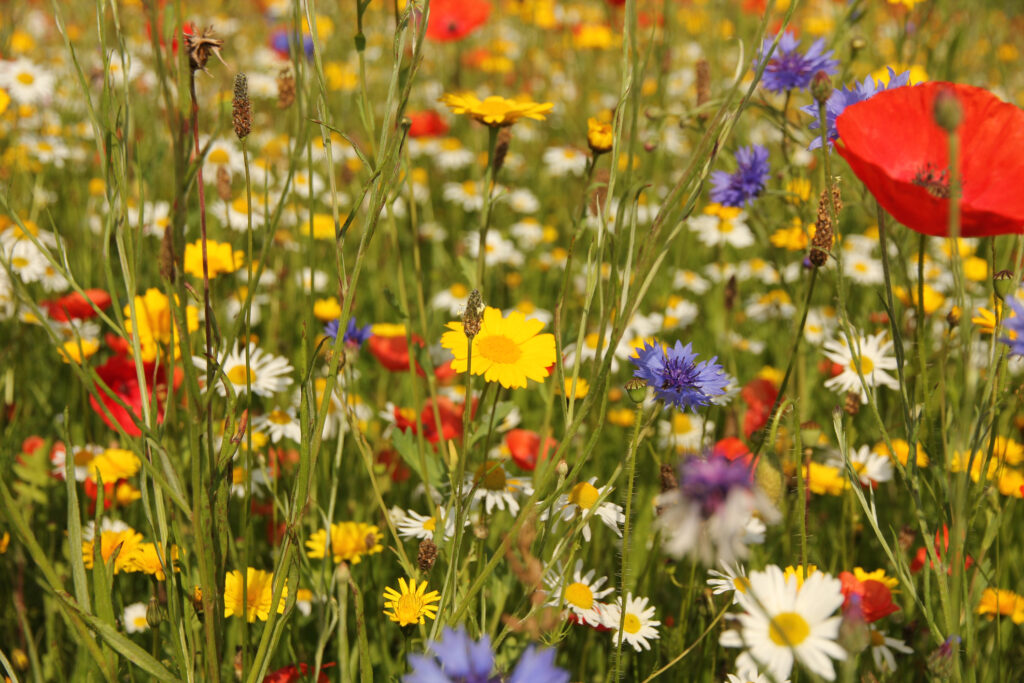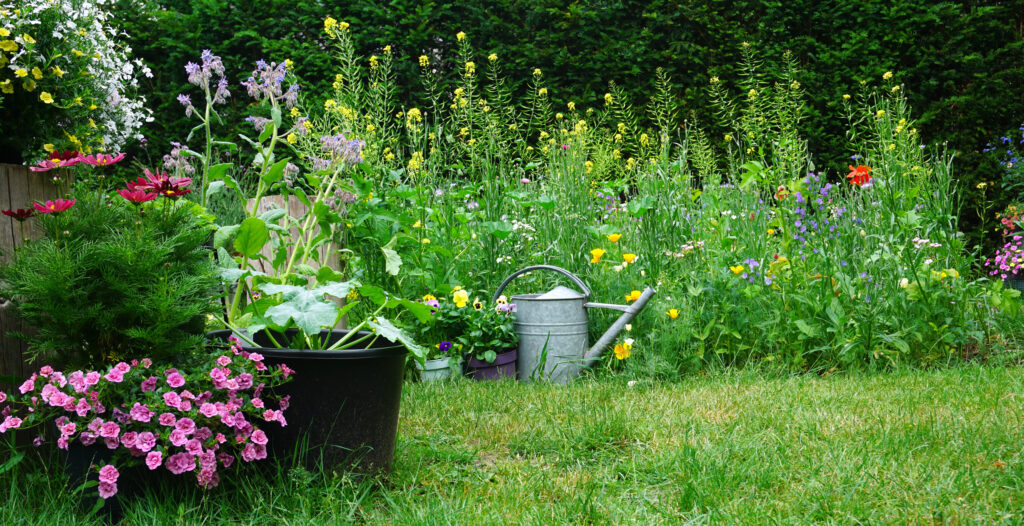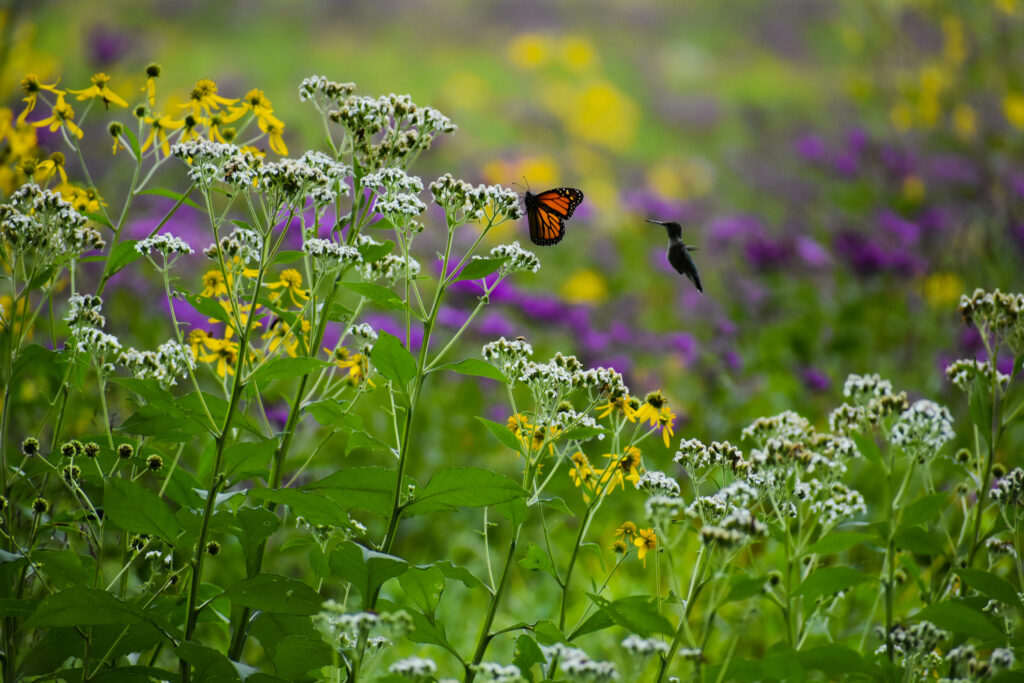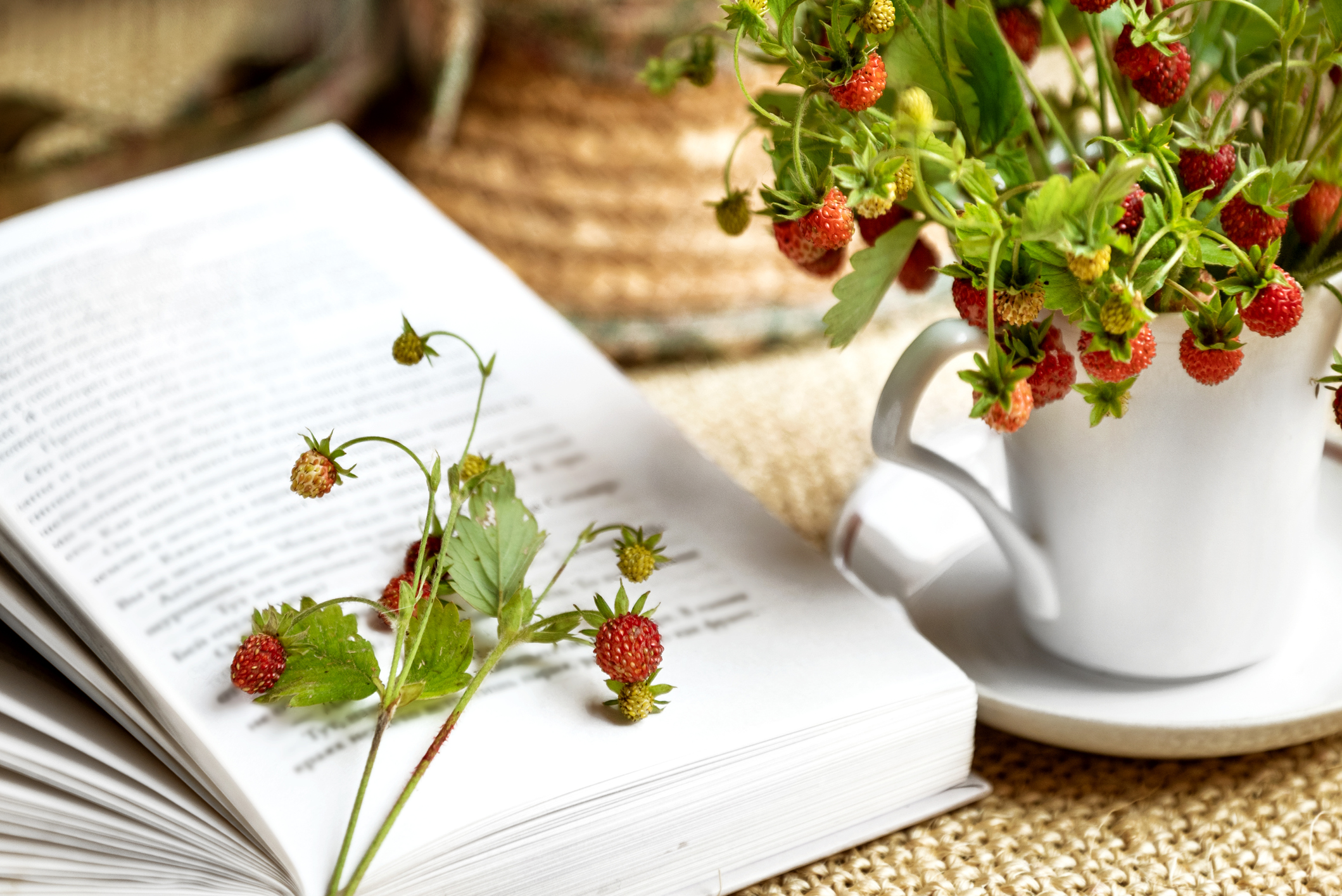
Support Pollinators All Season Long
You may have heard that pollinators are in decline across the world, so how can we help? Consider growing a meadow garden. With the right mix of plants, these types of gardens bloom all summer long, while providing food and shelter for bees, butterflies, and other types of wildlife. Let’s check out the steps to make these gardens a success!
Choosing Types of Plants

Most gardeners look for plants that bloom all season long and are a food source for birds and pollinators. To get that long bloom time, you’ll want plants that flower at different times. A wildflower seed mix provides different species for continuous blooms. These mixes usually contain perennials and sometimes annuals. Some of the perennials you may find are Rudbeckia, Echinacea, Asclepias, and Heliopsis.
Choosing Your Meadow Garden Location

Sunlight
In most cases, a meadow garden should have full sun.
Soil
The next thing to consider is the soil type. Certain types of soil are common in every region, but the soil on your property may be different than surrounding areas. Soil has three types of particles that determine its ability to hold water and nutrients. These include clay, sand, and silt. Here’s a breakdown of each material.
- Clay (Medium Soil) – Retains medium amounts of water and nutrients. For many plants, clay holds the right amount of water, but it can promote drainage problems in some areas. During drought, clay soil can hold more water than other soil types, which is helpful for deep-rooted species.
- Sand (Dry Soil) – Has less ability to hold water and nutrients. An ideal soil type for many prairie plants.
- Silt – This material is the middle ground between clay and sand. It holds a moderate amount of water and nutrients.
Soils that have a good balance between these materials are often called loamy soil. Plants in a meadow garden can thrive in a range of soils, though you should avoid planting in areas with frequent standing water (rain gardens are good for wet spots).
As you map the site, measure the square footage of your future meadow and use that number to determine how much seed you’ll need. A typical planting rate is 5 oz per 1,000 sq ft. There’s no rule for how large a meadow needs to be, so pick a size that works for you.
How To Determine The Soil Type
A quick way to determine your soil type is picking up a handful of moist soil and rubbing it with your fingers. Clay soil will stick together and have a smooth texture. Soil with high amounts of sand will feel gritty and fall apart easily. Many soils will fall somewhere in the middle with a blend of clay, sand, and silt.
Should You Start with Seeds or Transplants?

A meadow garden can be planted using seeds or transplants. With seeds, you can spend less money and have a dense planting that crowds out weeds after the first couple years. A wildflower mix gives you a range of species that align with your goals for the meadow. If you’re hoping to attract bees, consider a Bee Feed Mixture. A Bird & Butterfly Mix will attract other wildlife to your meadow.
Transplants will cost more, but also provide quicker gratification compared to growing from seed. A meadow doesn’t have to be just natives, but native species provide the most benefits for pollinators and wildlife.
How To Prepare The Site

Before you plant, the most important step is removing the existing vegetation. This could be an established lawn or an area that is full of weeds. In either case, you’ll want an empty area of soil to plant. Here are some methods for removing an existing lawn.
- Smothering – This takes the most time but gives you a clean slate for planting. To smother the lawn, put a thick layer of black plastic, plywood, or cardboard over the future planting area and leave it on for a whole growing season. Remove the covering in fall or early spring.
- Removal – Use a sod cutter or spade to remove the existing grass, then lightly till the soil to prepare for planting.
- Herbicide – An herbicide can be used to eliminate lawn or weeds. However, the treated area shouldn’t be planted for at least 4 weeks after spraying. Several applications may be needed if the weeds are prominent.
The amount of preparation will decide the future of the meadow garden, so it must be thorough. Otherwise, weeds will be a problem as the meadow becomes established.
When Should I Plant My Meadow Garden?

Meadows are usually planted in spring or fall, but summer also works if you have irrigation.
Many perennial seeds need a period of cold weather to germinate, so fall is a good time to plant those species (the seeds will germinate in spring). The right planting time will vary, but late September until early November is ideal for most gardens. If you plant seeds in the fall, there’s no need to water them.
You can also plant seeds in spring to enjoy annuals that are in the seed mix. Just be aware that many of the perennials won’t germinate until the following spring.
Meadow Garden Planting Tips

Seeds can be planted by hand broadcasting or using a spreader. Before spreading the seeds, you’ll want to mix them with a carrier (a moistened material that helps you spread with more accuracy), like play sand, seed starting mix, or peat moss. The ratio should be 1 part seed to 2-3 parts carrier.
After you blend the seeds and carrier, create two batches for planting. Next, start broadcasting the mix by walking north to south. Continue going back and forth until you’ve reached the other end of the plot. Then, take the next batch of mix and do the same thing, moving east and west.
Once the seeds are in the plot, use a lawn roller or plywood to press down on the seeds (this promotes good seed-to-soil contact). Lastly, put a thin layer (1/2”) of straw over the site to help the seeds remain in place over winter.
What Happens After Planting?

Patience is key with a meadow garden, as most perennials won’t mature until 2-4 years after planting. But here’s the good news. When the planting is done, the hard work is almost over. Soon enough, you’ll be enjoying months of blooms and pollinators!
Other Reading Recommendations

- Discovering & Growing Woodland Wildflowers
- Bee Gardens: Cultivating Pollinator Paradises
- Create A Monarch-Friendly Flower Garden
- Wildflower Magic: Sowing Perennial Wildflower Seeds For Success

At Jung Seed Co, we strive to be your go-to guide for all your gardening needs. Our YouTube channel The Garden Doctor by Dick Zondag is where he provides gardening tips for all levels of gardeners. When you need reliable gardening advice, turn to the trusted experts at Jung.
View our new catalog online or browse our website for your gardening favorites. To receive info on new products, exclusive deals, and specials, be sure to sign up for our weekly email. Join our Facebook page, to discuss all things gardening!
About the Author: Matthew Olson is a professional horticulturist and garden writer. He has a bachelor’s degree in horticulture from UW-River Falls and is a certified professional with the Minnesota Nursery and Landscape Association. His enthusiasm for plants and the outdoors brought him to the green industry. He regularly writes articles about gardening for both gardeners and industry professionals. He can be reached at matt@mattolsonhorticulture.com.